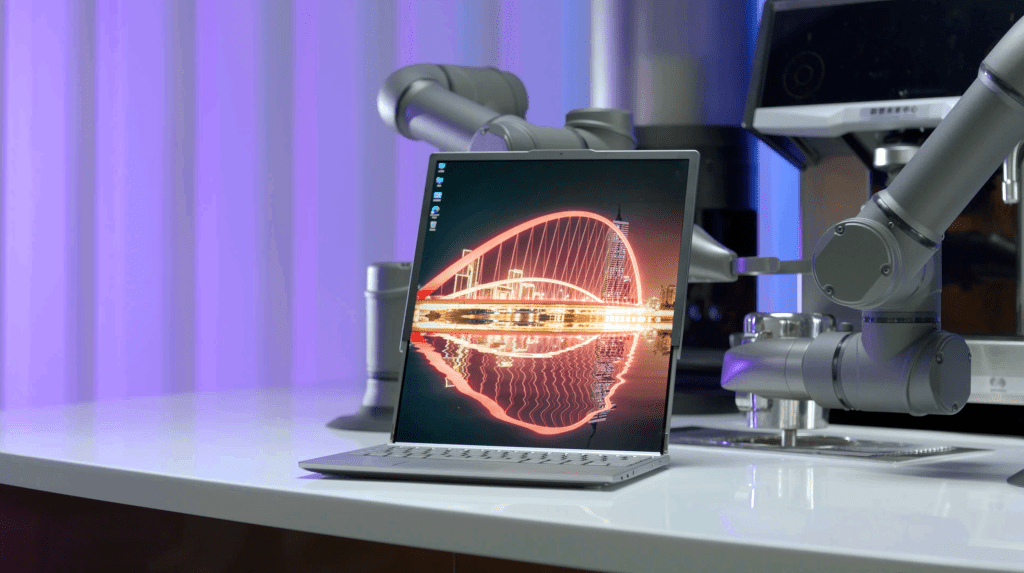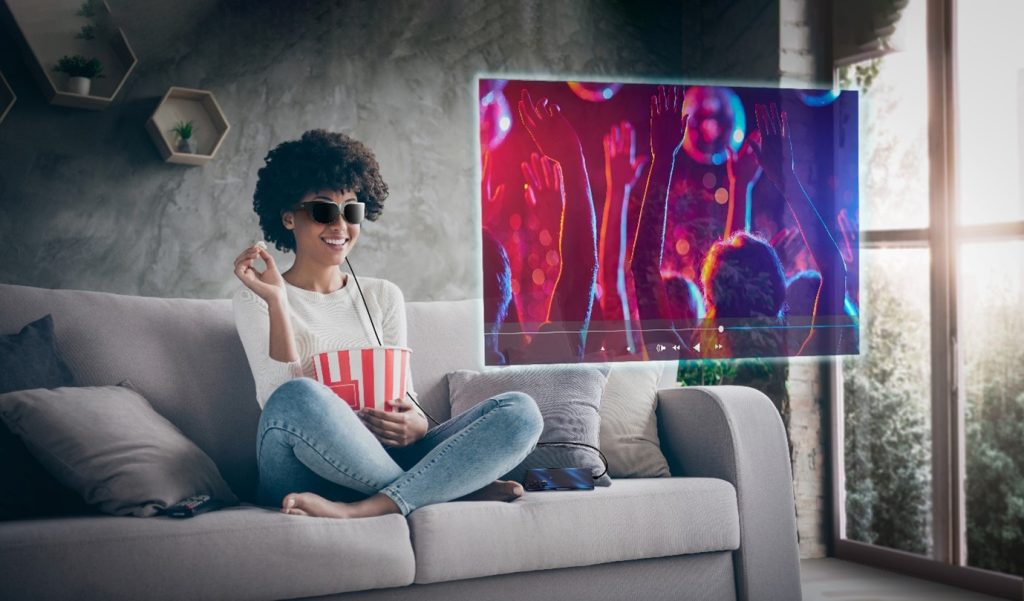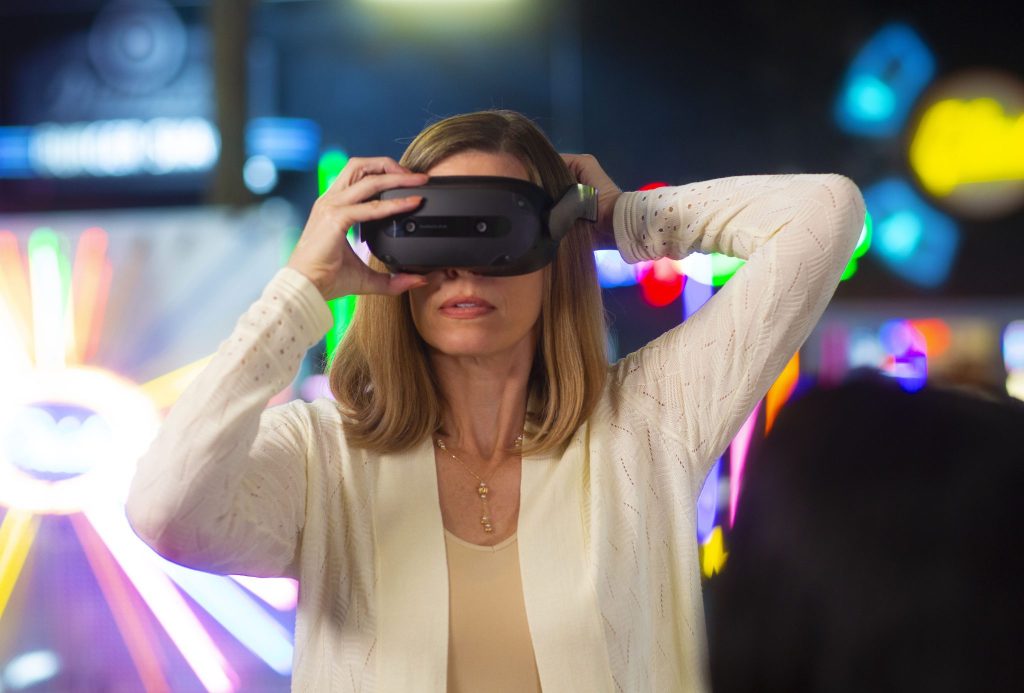Shape-Shifting Screens, Smart Cities, Mixed Realities, and AI Everything: Predicting 2023 and Beyond
Mohammed Hilili, General Manager, Lenovo Gulf, shares his insight into what technologies will become mainstream in 2023 and beyond.
Smarter, more integrated technology is already transforming everything from the devices in our hands to how we collaborate with colleagues or even buy groceries. As artificial intelligence and edge computing proliferate, bringing power and efficiency to countless industries and activities, we see tremendous change happening.
But what will 2023 (and beyond) bring? What surprises are ahead for our rapidly advancing relationship with technology?
Below we explore some of the technologies already emerging – but which are set to change our world even more in the near future.
1. ‘Holographic’ technology will energise meetings
In our new hybrid world of work, technology will step up to create meetings where ‘holographic’ attendees feel nearly as real as being there in the flesh.
Technologies that can bring teams together, even if they are working across several continents, will grow in importance in the hybrid, remote, and increasingly global workplaces of the future.
For presentations, product launches or meetings with other organisations, augmented and mixed reality will offer a new way for organisations to make an impact, with life-size ‘holograms’ who can interact with virtual objects (for example, to show off a new prototype, or to explore a ‘digital twin’ of a real-world object).
Lenovo’s concept Cyber Space technology shows off how this ‘phygital’ approach (blending the physical and digital) might work, with a special coated glass which is semi-transparent and semi-reflective, and which allows people behind it to physically interact with life-sized objects.
2. Shape-changing devices will boost hybrid work

Lenovo’s next-gen 16-inch ThinkPad X1 Fold refines the foldable PC category.
Screen size remains valuable in an age of multi-tasking and devices designed to shoot and edit videos, stream content, play games, and every other activity packed into our portable devices. In the future, the phones in our pockets might actually be a lot smaller – a reversal of the trend long-seen in smartphones – but ‘extend’ or ‘unfold’ to become larger when we need to use them. An unassuming, familiar device can switch into productivity mode with the touch of a button.
Motorola’s Rollable Proof of Concept was debuted at Lenovo Tech World and is compact and pocketable when retracted and expands for a large screen when you need it.
This year, Lenovo and Motorola unveiled two pioneering devices which illustrate how the devices of the future might transform whenever the user desires, equipping the hybrid, mobile user of the future.
Motorola’s 312 Labs innovation group designed a concept rollable smartphone which retracts to just 4.5 inches tall – far more pocket-friendly than most premium devices.
When users need more screen space (for work, or just to unwind with a movie or a game), the concept device expands from a 5-inch display to 6.5-inch, as big as market-leading devices.

Lenovo’s Rollable PC proof of concept shows a flexible display that rolls out on command on a motor for a larger screen size, while maintaining its thin and light form.
For mobile workers, Lenovo also showed off a proof-of-concept Rollable PC, which rolls out a 15.3-inch screen for added productivity (for example, offering additional screen space for coders). The screen rolls out on command thanks to motors inside the laptop, so workers can boost their productivity and flexibility at the touch of a button.

The Lenovo Glasses T1 is a wearable private display for on-the-go content consumption.
And for those who need portability, privacy, and extended screen space, don’t be surprised if you see more people “wearing” their screens.
3. The metaverse will change the way we work
The metaverse is going to edge closer to reality – but it won’t be about cartoon avatars and games. Instead, metaverse technology will be driven by the world of work, not play.
We’re probably at an equivalent stage to the mid-90s World Wide Web in terms of the evolution of the metaverse, and big leaps are just around the corner. Teams will learn to collaborate, share and work in immersive spaces – what we refer to as the Enterprise Metaverse – and that will drive adoption of the technology. Rather than games such as flight simulators, it will be ‘job simulators’ – immersive training – which drives the adoption of the metaverse.

The ThinkReality VRX is a next-level VR headset for immersive training, collaboration, and 3D design.
Solutions such as Lenovo’s ThinkReality VRX headset are coming to market to enable workers to collaborate together in virtual reality and enabling rapid, cost-effective training programmes.
At Lenovo, we believe that the future of the metaverse is collaborative and truly open, where ideas and technology are easily shared, rather than being restricted inside ‘walled gardens’ controlled by one company.
4. Shops will get smarter
Artificial intelligence will increasingly shape the world around us – and accelerate daily activities such as shopping.
In the near future, AI servers may analyse multiple video feeds from cameras in the aisles of shops to watch for large quantities of items being removed at the same time, and monitoring deliveries to the store to ensure that inventory stays high. This will enable shops to keep track of goods more efficiently, more rapidly adjust to supply and demand, and improve profit margins – and ensure customers get what they paid for.
When customers ‘click and buy’, AI cameras will keep a watchful eye to ensure they get what they ordered, cutting out an irritating part of the modern, self-checkout shopping experience.
American retailer Kroger has 2,750 stores across the United States and is using Lenovo edge AI servers to spot when things go wrong at the checkout. Lenovo’s edge servers monitor video data in real time, and an AI system offers customers a ‘nudge’ in the form of a five-second video displayed on the checkout’s screen if an item has not been scanned. Customers then have an option to resolve the problem – with Lenovo’s AI servers able to intelligently monitor 20 hi-res video feeds at once.
5. Multi-access edge computing (MEC) will power smart cities
In the future, intelligent cameras will manage traffic in ‘smart cities’, cutting pollution, congestion, and road accidents – and edge computing servers will enable everything from holographic teaching to augmented reality shopping.
Why edge computing? Multi-access edge computing (MEC) means that requests are processed within the smart city itself, rather than having to travel to some far-away data centre, meaning that queries can be answered within milliseconds. In Barcelona, a pilot scheme is showing the power of edge computing, with 3,000 Lenovo servers across the city enabling internet-of-things devices and cameras to deliver data where it is needed.
In the future, edge computing could even help cities hit pollution targets by controlling traffic lights so cars drive in a more fuel-efficient way.
6. Hybrid work will enable new technologies
The way we work has changed forever, and in tomorrow’s new hybrid workspace, the way companies use technology will change – with a shift towards technologies such as smart sensors, and a move to renting everything from hardware to the office experience itself.
This will cut overheads for new businesses, enabling young companies to scale more rapidly and flexibly.
This shift is already underway, with a Lenovo survey of 500 CTOs finding that 43% said their company’s technology architecture was ‘improved’ and elements such as smart devices (76%) and smart internet-of-things (70%) surging in importance in the past year.
Businesses will shift towards a more fluid model where the entire office experience and related solutions and services can be provided by a third party. Lenovo now offers a managed employee experience where companies can rent a workplace solution, rather than just hardware or software – including (for example) IT infrastructure and support and performance analytics as well as cloud and data infrastructure services.
Learn more about Lenovo’s view of how smarter technology is powering a changing world here.
